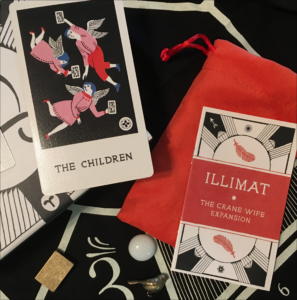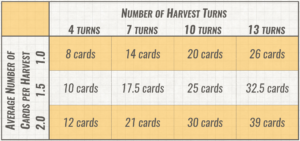Do you ever wish that strange and mysterious events would just… occur? As a lifelong fan of adventure stories, I certainly do. With that kind of heroic inspiration in mind, my partner Laser and I made an irrevocable decision. Exactly one year ago, in the warm, glowing moments directly after our space-themed wedding ceremony, we orchestrated a devious puzzle hunt for our completely surprised attendees. Because that’s how the Malena-Webbers plan their wedding.
 Step 1: Honesty
Step 1: Honesty
Both of us love puzzles and games, and we wanted to make sure our entire day was infused with these ideas. We solved a puzzle during the ceremony and had board games available during the reception. Games are important to us both and as we started playing them together, we realized that we didn’t have as much fun when a game forced us to be dishonest. Even holding onto a secret was troubling. So as we planned out the game, we wanted to make sure that we wouldn’t have to lie to anyone for any reason—or force anyone else to lie! Honesty would be our credo. Which meant I had a lot of secret preparations and work to do.

I began writing the puzzles in December. They needed to be crafted for an audience of our friends, which includes both puzzle-masters and puzzle-phobes. So we wanted big, fun reveals and the ability to opt in or out as any guest saw fit. Multiple iterations later, we had our plan. We filmed an introductory video and I frantically built props that could be set throughout the wedding without any guests knowing or finding them in advance! I ended up setting many of the props around the room myself and decided “I can do this myself!” was as close as I’d get to crossing that honesty line, even to the members of our wedding party. It was a struggle. But we came, we saw, we… let’s just say it went pretty well.
Step 2: Learning Experiences
On April 1st, 2017, we walked back down the aisle after exchanging rings and vows to (of course) thunderous applause. We found a quiet hallway and hid, knowing that the puzzle was about to begin! Our guests found their tables, each with a perfect theme like Lord of the Rings, Dungeons and Dragons, or Tabletop Games. You know, the stuff we like.
 After a few moments, our two Astronaut MCs took the stage and played our introduction: We’d already lost our rings! It was up to our gathered friends to find them. There might be some kind of note on the back of the placemats…
After a few moments, our two Astronaut MCs took the stage and played our introduction: We’d already lost our rings! It was up to our gathered friends to find them. There might be some kind of note on the back of the placemats…
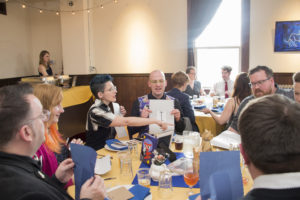
In this puzzle step, each placemat had a large letter written on the back. When kept in order, the set at each table formed a word, with one or two extra letters, but the word was for the theme at another table! So the Oregon table might have GOLLUM+RT, which meant they needed to team up with the Lord of the Rings table! As the tables formed into three groups, those extra letters would form a series of three words, revealing the next instruction.

We heard the ruckus begin as we hid, waiting for the climactic moment when they’d complete the puzzle. Time dragged on and eventually I had to peek. The crowd was stumped! I sat back, panicking and hoping for an update from a worried Astronaut. Eventually, we learned that one table had mixed up their letters and formed a word I hadn’t even considered! As confusion reigned, all of the placemats were removed from the tables and placed out in the floor for further public debate.

They got it eventually, but I certainly learned the value of being prepared for the unexpected.

This puzzle solved to RINGING PRESENT INTERIOR, and the guests quickly moved on to the next stage.
Step 3: The Hero Moment
A table had been set up in advance for wedding cards and gifts, including three that I’d planted there that morning. Two made silly sounds when shaken, but one had a bell that rang loudly! The guests looked at each other before tearing open the paper, ripping into the box, and finding a very special Rubik’s Cube covered in stickers.

Has there ever been a moment in your life when you wished that your particular set of skills might make the difference between life and death? Or the difference between your friends getting their rings back or not? I wanted to give one player that miraculous moment on a big stage, while at the same time hoping that anyone in the room could solve a Rubik’s Cube!

Thankfully, we’ve got the right kind of friends. When the Cube was solved, it read THE SECRET CODE BEHIND THE CONSTELLATIONS. The guests looked around and saw the beautiful constellation paintings that had been painted by the incredible Susan Webber and set around the room throughout the day and quickly wondered what was on the other side.
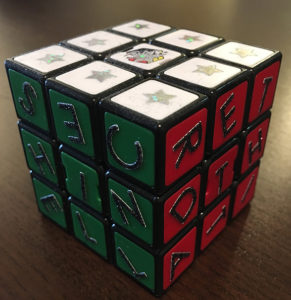
Step 4: Finding Joy in Challenges
The guests peered behind the paintings and didn’t see anything. Then they noticed that there was paper attached to the back of each painting, hiding the canvas beneath.

With quick sideways glances to make sure that decoration destruction was allowed in this puzzle, they eventually ripped through the paper and saw cards tacked to the inside.
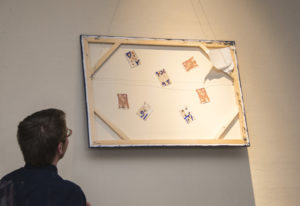
These cards were collected, brought up to the mainstage, and assembled on the floor for everyone to see. Though the writing made it a little tough, they eventually found the final instruction—WHAT DID THAT HOBBITS ASK WHEN HE TRICKSED ME?
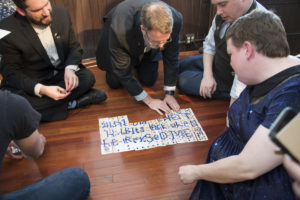
Our guests then went up to the Astronaut MCs who had been taunting them throughout the day and asked “What have I got in my pocket?” They said, “I don’t know what YOU have in YOUR pocket, but we have rings in ours!”
And like that, the rings were found. Marriage saved.
Step 5: It’s a Wonderful Life
In the year since we ran this puzzle, Laser and I have picked up and moved to a new city, found new jobs and new opportunities, and brought new friends into our lives. It has often been stressful and challenging, but we’ve made sure to spend time playing games, solving puzzles, and trying to maintain this constant sense of wonderment in our marriage and our lives. I think we both love the joy that comes from navigating a challenge and bringing it to successful and satisfying conclusion! All these puzzles and games and all the friends we’ve been fortunate enough to share these events with made our lives better and helped make our wedding the most wonderful day I’ve ever had.

To my favorite person in the world, Happy Anniversary! Here’s to many more games to come!
(The first anniversary is the Puzzle-Based Blog Post Anniversary, right?)
 Before you get started on this article, let me ask you two questions. Do you like game theory? Do you dislike what the current administration is doing to this country? Great. Get this book. With that out of the way, let’s get to a heartfelt blog post.
Before you get started on this article, let me ask you two questions. Do you like game theory? Do you dislike what the current administration is doing to this country? Great. Get this book. With that out of the way, let’s get to a heartfelt blog post.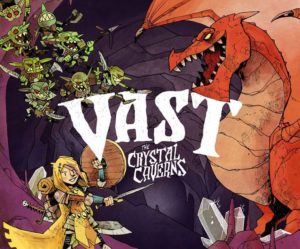 That playtest with the tiles in the basement? That was my first introduction to Vast: The Crystal Caverns, the new asymmetric hotness that was preparing to take over the gaming world. In Vast, each player gets their own role, pieces, player board, and
That playtest with the tiles in the basement? That was my first introduction to Vast: The Crystal Caverns, the new asymmetric hotness that was preparing to take over the gaming world. In Vast, each player gets their own role, pieces, player board, and  When players aren’t directly competing, it becomes a little bit easier to give people wildly different gameplay. I was a little shocked at how much I enjoyed playing the new game Villainous, a game licensed right from Disney. In this game, each player has their own board as they take on the role of a famous Disney villain and attempt to play out their own evil plan. As the cunning Jafar, I searched for the Magic Lamp in the Cave of Wonders, using it to summon Genie, and then Hypnotized that magical being for my own nefarious goals back in my Palace. At the same time, the Queen of Hearts was trying to turn a bunch of Card Guards into Wickets for a wild game of croquet over on her own evil board.
When players aren’t directly competing, it becomes a little bit easier to give people wildly different gameplay. I was a little shocked at how much I enjoyed playing the new game Villainous, a game licensed right from Disney. In this game, each player has their own board as they take on the role of a famous Disney villain and attempt to play out their own evil plan. As the cunning Jafar, I searched for the Magic Lamp in the Cave of Wonders, using it to summon Genie, and then Hypnotized that magical being for my own nefarious goals back in my Palace. At the same time, the Queen of Hearts was trying to turn a bunch of Card Guards into Wickets for a wild game of croquet over on her own evil board.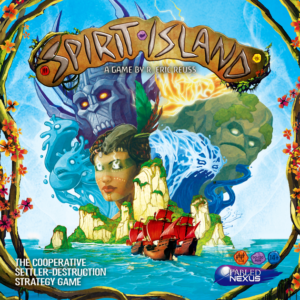 That feeling is harder to apply to a board game, but easily the top of the pack is the fantastic Spirit Island. In this “Reverse-4X” game, you play one of the island’s spirits, fighting back against the colonialist invaders and sending them back into the sea. Each spirit plays in a totally different way, with some focused on creating Fear, some manipulating the beasts and native Dahan, and others simply burning those invaders to the ground. As the game progresses, each Spirit is capable of more and more, which makes it very important for each player to be on top of their game. The invaders are tough, and routing them is going to take a concerted effort.
That feeling is harder to apply to a board game, but easily the top of the pack is the fantastic Spirit Island. In this “Reverse-4X” game, you play one of the island’s spirits, fighting back against the colonialist invaders and sending them back into the sea. Each spirit plays in a totally different way, with some focused on creating Fear, some manipulating the beasts and native Dahan, and others simply burning those invaders to the ground. As the game progresses, each Spirit is capable of more and more, which makes it very important for each player to be on top of their game. The invaders are tough, and routing them is going to take a concerted effort.  Step 1: Honesty
Step 1: Honesty
 After a few moments, our two Astronaut MCs took the stage and played our introduction: We’d already lost our rings! It was up to our gathered friends to find them. There might be some kind of note on the back of the placemats…
After a few moments, our two Astronaut MCs took the stage and played our introduction: We’d already lost our rings! It was up to our gathered friends to find them. There might be some kind of note on the back of the placemats…










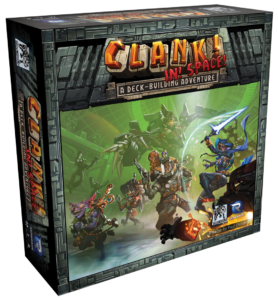 Back in December,
Back in December, 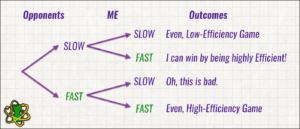 Rather than being about maximizing my own efficiency, Clank! is really a game where I need to be aware of my opponents and just keep up. If they start making some big moves, I need to do the same thing. If I fall behind, I am suddenly in danger of losing. But as long as I play at the same level as my opponents, the game is pretty fair.
Rather than being about maximizing my own efficiency, Clank! is really a game where I need to be aware of my opponents and just keep up. If they start making some big moves, I need to do the same thing. If I fall behind, I am suddenly in danger of losing. But as long as I play at the same level as my opponents, the game is pretty fair.



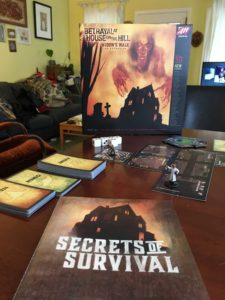 What about one of my favorite games, Betrayal at House on the Hill? Where does it fall on this Markovian spectrum? After many playthroughs, it feels like a player could gain momentum. They can constantly catch a break, randomly drawing more omens and items than other players while they fail checks and take damage. However, that momentum is merely the result of random chance, not conscious choice. Instead, if we consider that any player at any moment could swap out with a new player without any change at all in strategy or efficiency, we could easily call Betrayal a Markovian game.
What about one of my favorite games, Betrayal at House on the Hill? Where does it fall on this Markovian spectrum? After many playthroughs, it feels like a player could gain momentum. They can constantly catch a break, randomly drawing more omens and items than other players while they fail checks and take damage. However, that momentum is merely the result of random chance, not conscious choice. Instead, if we consider that any player at any moment could swap out with a new player without any change at all in strategy or efficiency, we could easily call Betrayal a Markovian game.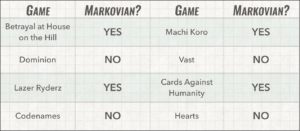
 The Builders: I already mentioned that deckbuilders aren’t Markovian, but a tableau-builder like Machi Koro absolutely meets these requirements. There’s nothing hidden in Machi Koro. I can look at the cards I’ve previously chosen as well as everyone else’s when I make my next decision. Even a more complex game like Valeria Card Kingdoms doesn’t have a “memory” beyond the state you can see at the start of your turn.
The Builders: I already mentioned that deckbuilders aren’t Markovian, but a tableau-builder like Machi Koro absolutely meets these requirements. There’s nothing hidden in Machi Koro. I can look at the cards I’ve previously chosen as well as everyone else’s when I make my next decision. Even a more complex game like Valeria Card Kingdoms doesn’t have a “memory” beyond the state you can see at the start of your turn.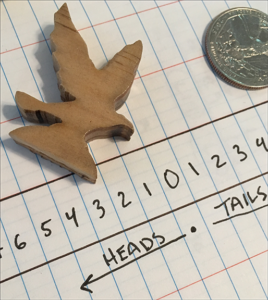 As I’ve probably mentioned before, randomness and probability are highly unintuitive ideas. Not that we can’t understand what they are, but that their natures make it difficult to predict what will happen in specific situations. One great example of probability comes from an idea we call the random path. Imagine a person walking down the street. Before taking a step, they have to spin around until they are facing in a random direction. This erratic motion could lead to a completely chaotic mess with interesting applications to study, but this experiment also has some problems. Motion creates momentum, so our walker might tend towards one direction over another. They might also spin for the same amount of time each step, always turning precisely 270 degrees.
As I’ve probably mentioned before, randomness and probability are highly unintuitive ideas. Not that we can’t understand what they are, but that their natures make it difficult to predict what will happen in specific situations. One great example of probability comes from an idea we call the random path. Imagine a person walking down the street. Before taking a step, they have to spin around until they are facing in a random direction. This erratic motion could lead to a completely chaotic mess with interesting applications to study, but this experiment also has some problems. Motion creates momentum, so our walker might tend towards one direction over another. They might also spin for the same amount of time each step, always turning precisely 270 degrees.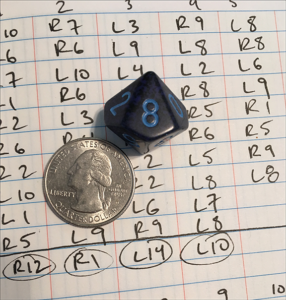 So, like any good statistician, I first tried it out. I completed a series of ten experiments and recorded my results. My results varied from 12 on the right to 31 on the left. Seven of my random paths ended on the left, while only three went right. I hadn’t expected any significantly larger numbers, but I was certainly hoping!
So, like any good statistician, I first tried it out. I completed a series of ten experiments and recorded my results. My results varied from 12 on the right to 31 on the left. Seven of my random paths ended on the left, while only three went right. I hadn’t expected any significantly larger numbers, but I was certainly hoping!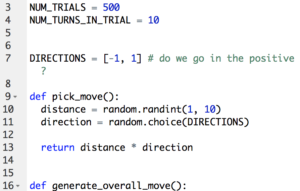
 The second task is significantly more interesting. It feels more likely that we’ll get a result like zero, but the big question is how far does our number line need to stretch. We can see that a result of 100 to the left or right is entirely possible, but it isn’t very likely—in fact, the odds are 1 in 5,120,000,000,000 that the meeple ends up at one of the two extremes! So, how many numbers do we need in our line?
The second task is significantly more interesting. It feels more likely that we’ll get a result like zero, but the big question is how far does our number line need to stretch. We can see that a result of 100 to the left or right is entirely possible, but it isn’t very likely—in fact, the odds are 1 in 5,120,000,000,000 that the meeple ends up at one of the two extremes! So, how many numbers do we need in our line? Take a look at this data all grouped up. Our experiment forms a simple bell curve! This kind of data is the easiest to analyze. We can see the most of the results are clustered around zero. To talk more mathematically about this clustering, we need to know the standard deviation of our data. The standard deviation measures how grouped our data happens to be. If the standard deviation is small, the data is clumped around the mean. With a large standard deviation, the data is more spread out.
Take a look at this data all grouped up. Our experiment forms a simple bell curve! This kind of data is the easiest to analyze. We can see the most of the results are clustered around zero. To talk more mathematically about this clustering, we need to know the standard deviation of our data. The standard deviation measures how grouped our data happens to be. If the standard deviation is small, the data is clumped around the mean. With a large standard deviation, the data is more spread out.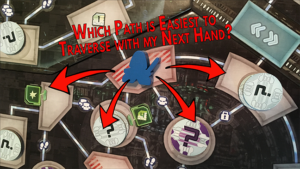 Games involving chance make it clear that specific outcomes are not completely within a player’s control.
Games involving chance make it clear that specific outcomes are not completely within a player’s control. 
